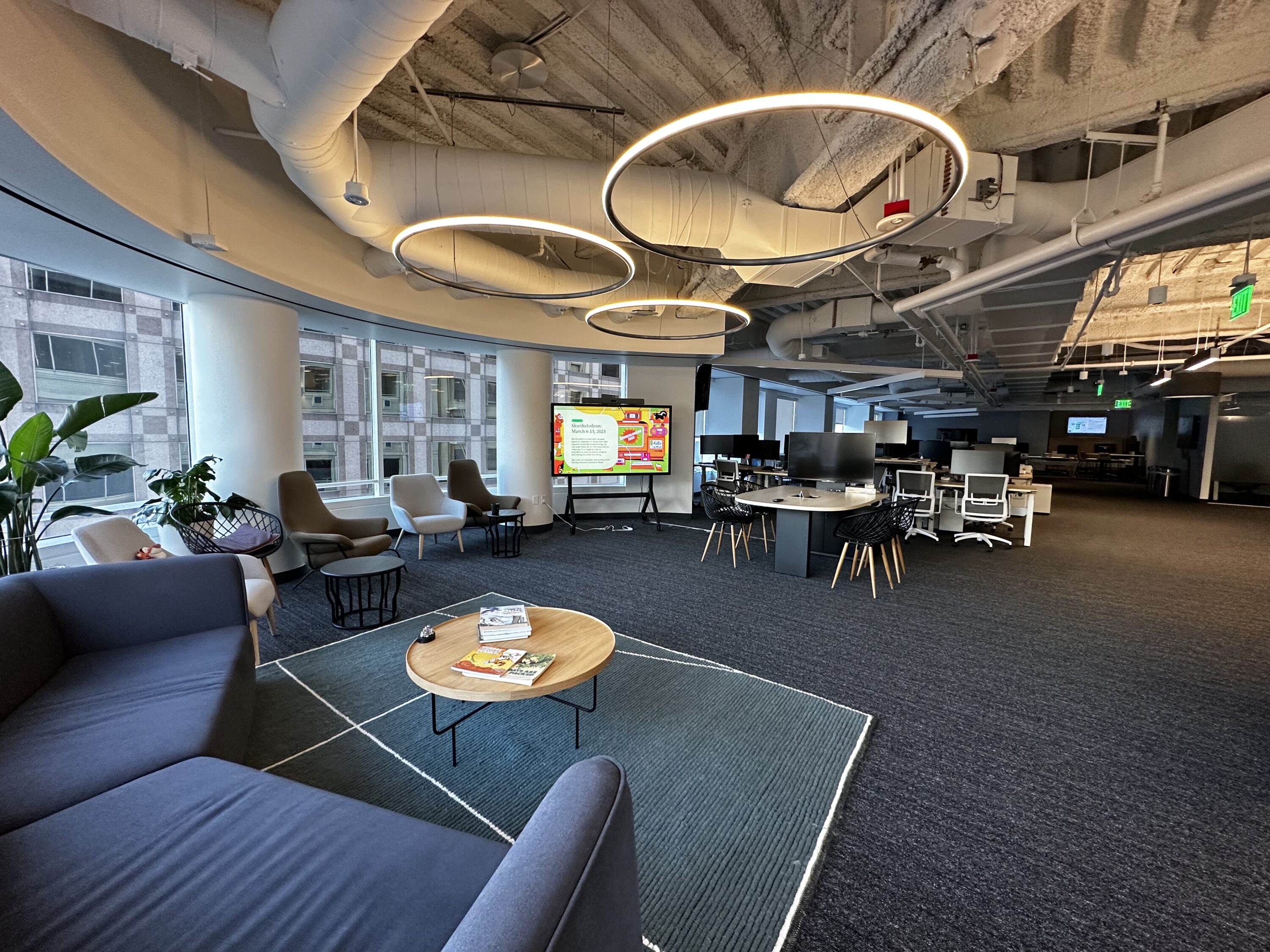
Revolutionizing Workplace Dynamics: Creating a Welcoming Destination for All!

Robin Weckesser of a3 Workplace Strategies shares shares insights on unlocking workplace potential.
Well before the pandemic, it was clear that workplace design solutions, tailored to the organization, delivered positive results to the bottom line. The right solutions depend on the functional work requirements and the unique characteristics of each organization.
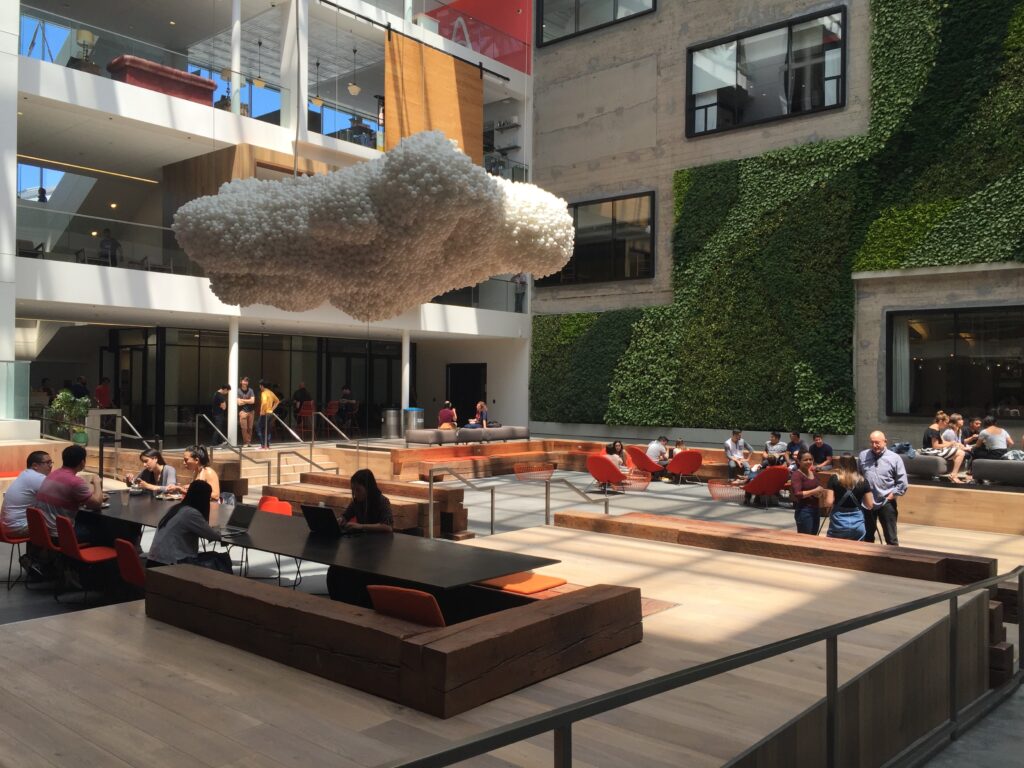
Street-level view of building lobby, collaborative work areas Airbnb San Francisco.
In the wake of the pandemic, with so many employees working from home, the dynamics of workplace design have changed dramatically. Now, understanding organizational requirements matter more than ever. To remain competitive, the stakes couldn’t be higher.
That’s why a strategic approach is critical.
As the office evolution continues, the “Great Resignation” may be over—replaced by the “Great Reevaluation.”
This is an opportunity for employers to review return to office (RTO) options and make appropriate adjustments. While solutions will vary, we know they should be task-driven and tied to the work function. They should be connected not only to amenities but also to the corporate culture.
The challenge is how we respond to change and meet the distinct needs of each workplace. Ultimately, we need to offer workplace tools that aren’t available out of the office. In other words, turn the workplace into a destination, not an obligation.
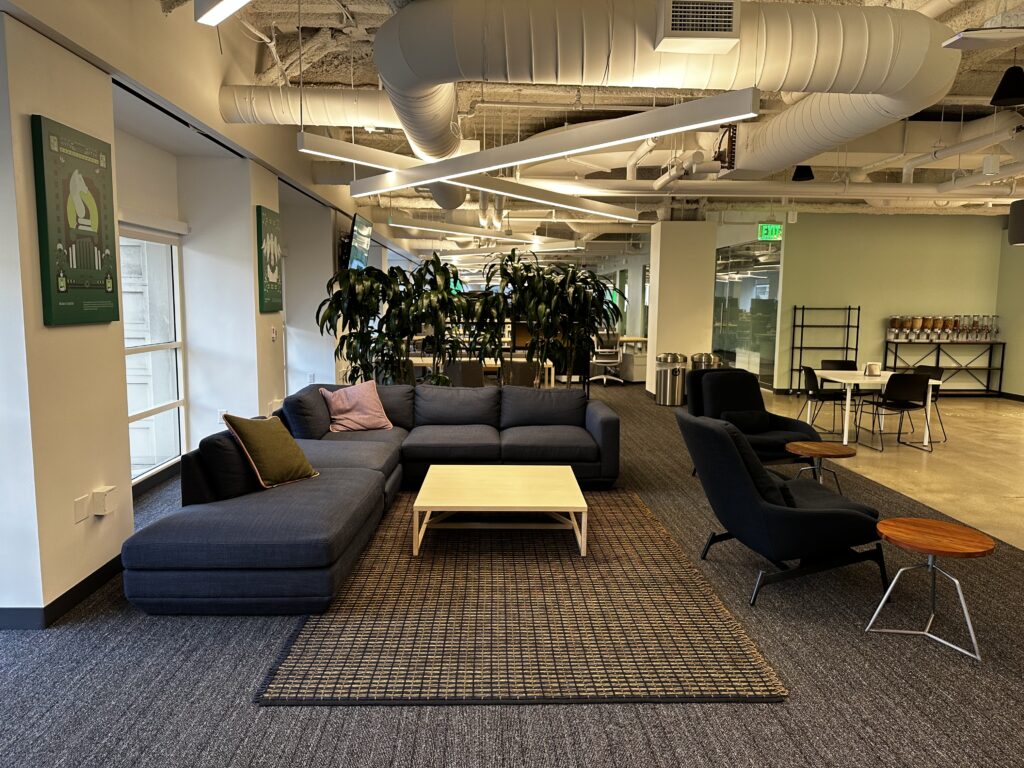
Alternative work area MongoDB San Francisco.
The Need to Connect
Let’s look at the latest RTO data:
- There’s a disconnect between staff and employers: While 61% of American workers want to work remotely at least three days a week, 77% of managers say they are ready to fire or cut the pay of employees who don’t comply with RTO mandates.
- 40% of remote workers say they’d quit if RTO mandates were enforced.
- 18% of workers forced to return to work say they are looking for a new job.
- Employees forced to return report spending hundreds of dollars per month on transportation and childcare costs, and this raises turnover risks.
- 99% of companies with RTO mandates saw a drop in employee satisfaction.
- 72% of employees prefer a hybrid work model.
- According to a Gallup poll, only 13% of workers say they “like going to work” and feel engaged; meanwhile, disengaged workers translate into trillions of dollars in lost productivity.
- While unemployment continues to be low and the economy continues to improve, job dissatisfaction is growing.
- One thing employers and employees agree on is the need to interact and collaborate, which begs the need for a least a partial return to the office.
Many more RTO surveys will follow, and employers are urged to stay apprised and seek the counsel of workplace specialists so they can interpret results, learn about best practices, and make the right choices.
One encouraging trend comes from a February 2024 report from consulting firm KPMG in which 90% of respondents say they would reward employees who make an effort to return to the office.
The tug-of-war continues, but it can be a win-win situation.
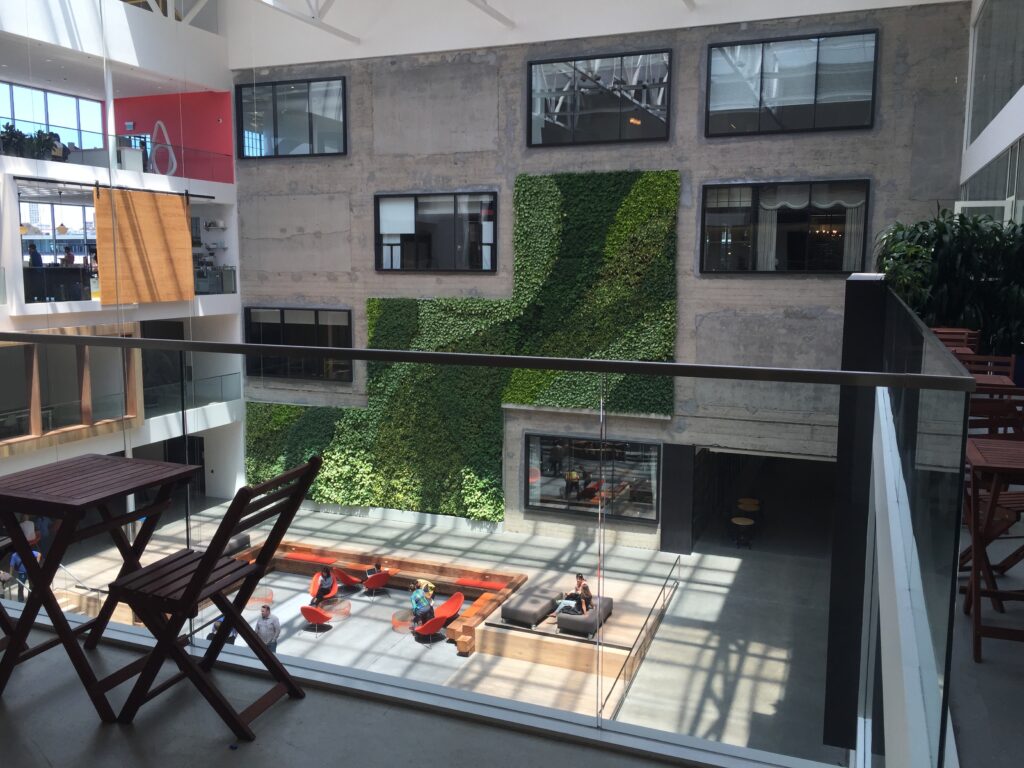
Building lobby collaborative work areas Airbnb San Francisco.
Making It Work
In a continuing effort to create a more welcoming destination, it is critical to remember that the workplace has its own personality, reflecting the organization’s culture and brand. This is where the design process can make all the difference, because one size doesn’t fit all.
Certainly, business as usual is no longer the way to go. But how can you make your office work for you? First, it’s important to assess what is most important to employees in terms of their space. What do they do, how do they do it, who do they interact with, and how can the workplace facilitate their role? How can the physical space better support human connection and boost performance? With that information, workplace options become clearer.
- One over-riding priority should be to create an environment that enables staff to work untethered anywhere in the office. Tied to this is the need to enable the use of IT and AV tools via high speed, ubiquitous network access.
- Another strategy that supports productivity is to develop a space that enhances staff comfort with a “resimercial” look and feel. This involves creating a space that combines residential and commercial features and becomes a home away from home.
Finding a Balance
Overall, it’s important to enhance and reflect the corporate culture through workplace tools that provide flexibility, freedom, and fun. The result will be greater productivity and profit.
Today, the workplace is more than just a job. It’s about a work-life balance. It’s about how employees are treated, whether in the office or at home. Increasingly, organizations are applying a hybrid work model to find a common ground—and they are discovering that a happy workforce is a productive workforce!
Yes, it’s a time of uncertainty and sometimes conflicting messages. But one thing is clear: We need workers to want to come back to the office. We need to provide them with an environment that is welcoming, exciting, and customized …a workplace that is truly a destination, not an obligation.
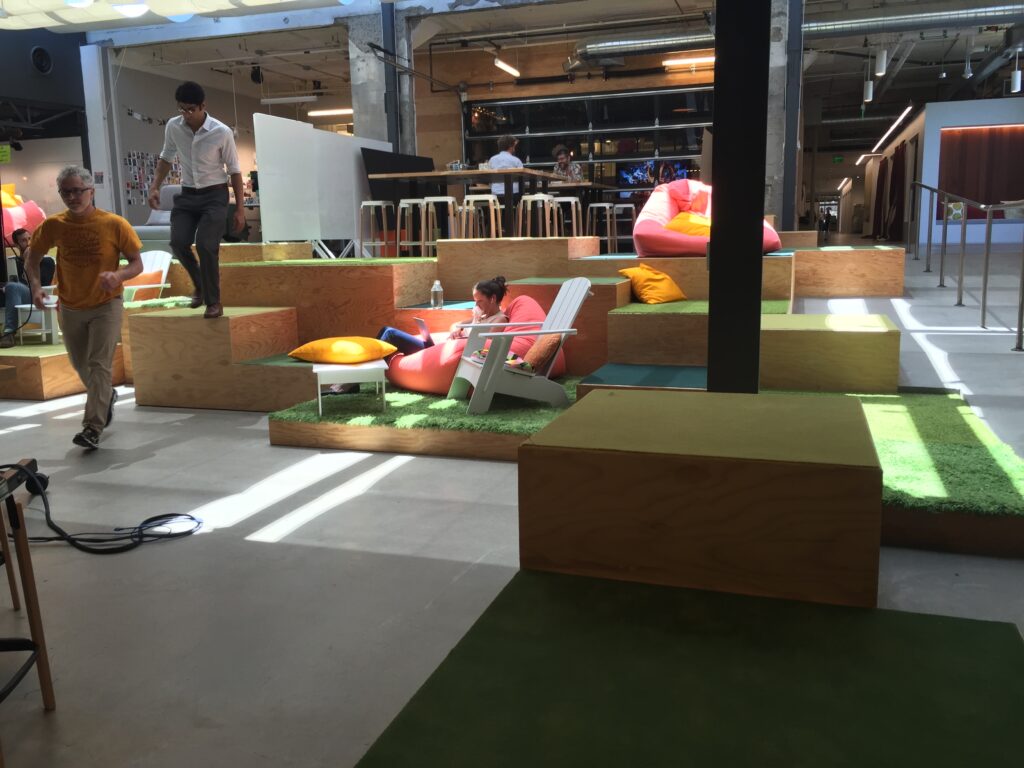
Alternative work settings at Airbnb San Francisco.
Amenities and Necessities
Increasingly, organizations are finding that they can promote corporate culture and boost the bottom-line by offering key office amenities that go beyond minimal office requirements. The amenities should be creative and personalized to enhance the experience of workers and visitors.
Popular amenities include:
- Personalized workspaces. In addition to customized workstations, employees value smart phone apps that allow them to select seating options, reserve meeting spaces, and control conference AV systems.
- Communal spaces. Open areas that support collaboration and relaxation.
- Private areas. For heads-down work.
- Mitigating the inconvenience of a commute, easy parking accommodations and bike racks are welcome perks.
- Ergonomic furniture. Comfort and environmental considerations include the ability to adjust the height of desks and the re-use of furniture.
Of course, many additional amenities are available, but they need to reflect the corporate culture. To find solutions that are efficient and cost effective, you need the right direction and the right team, starting with the project manager.



Sorry, the comment form is closed at this time.